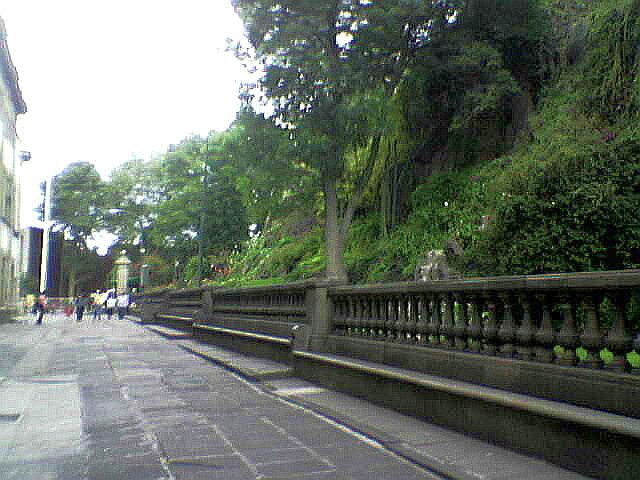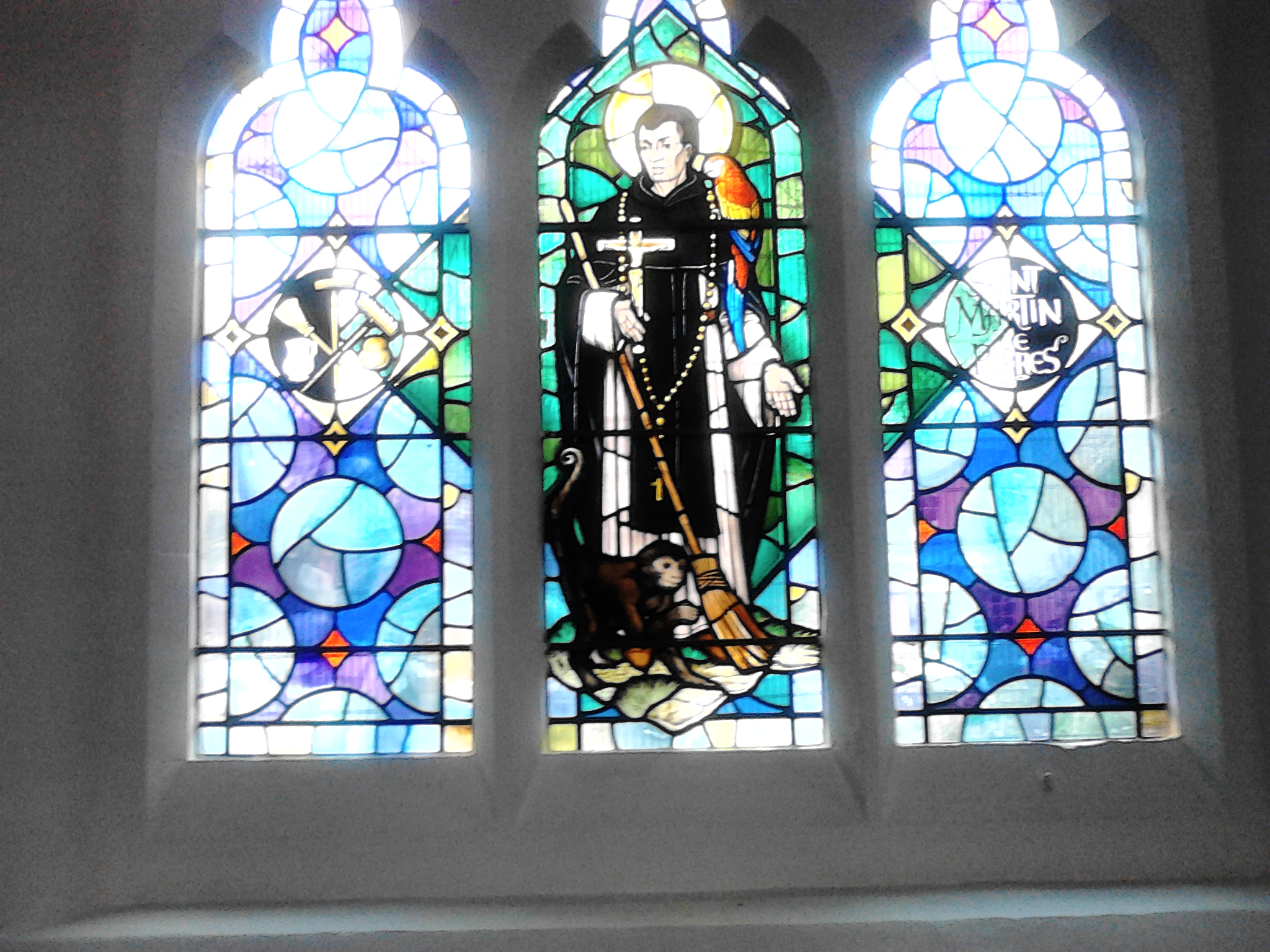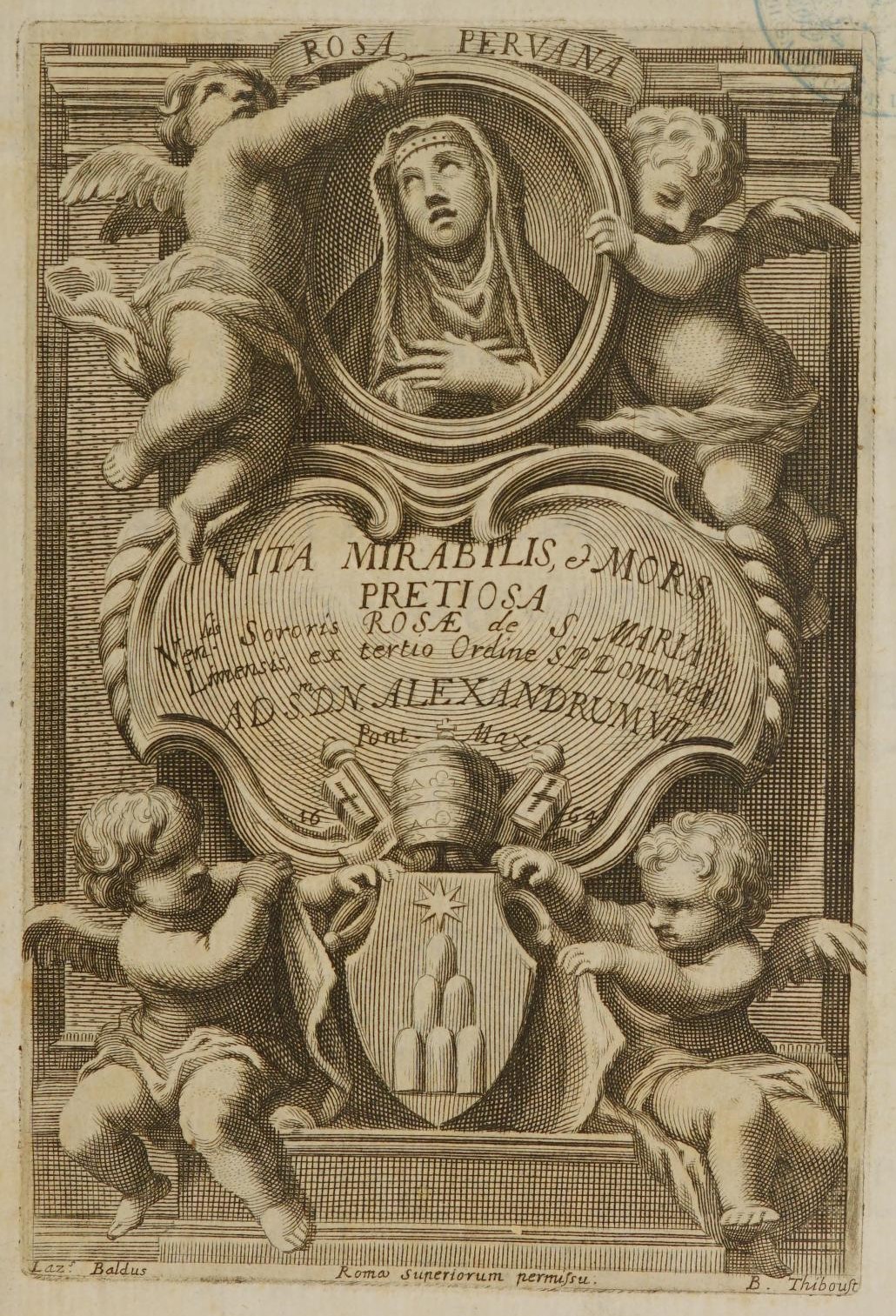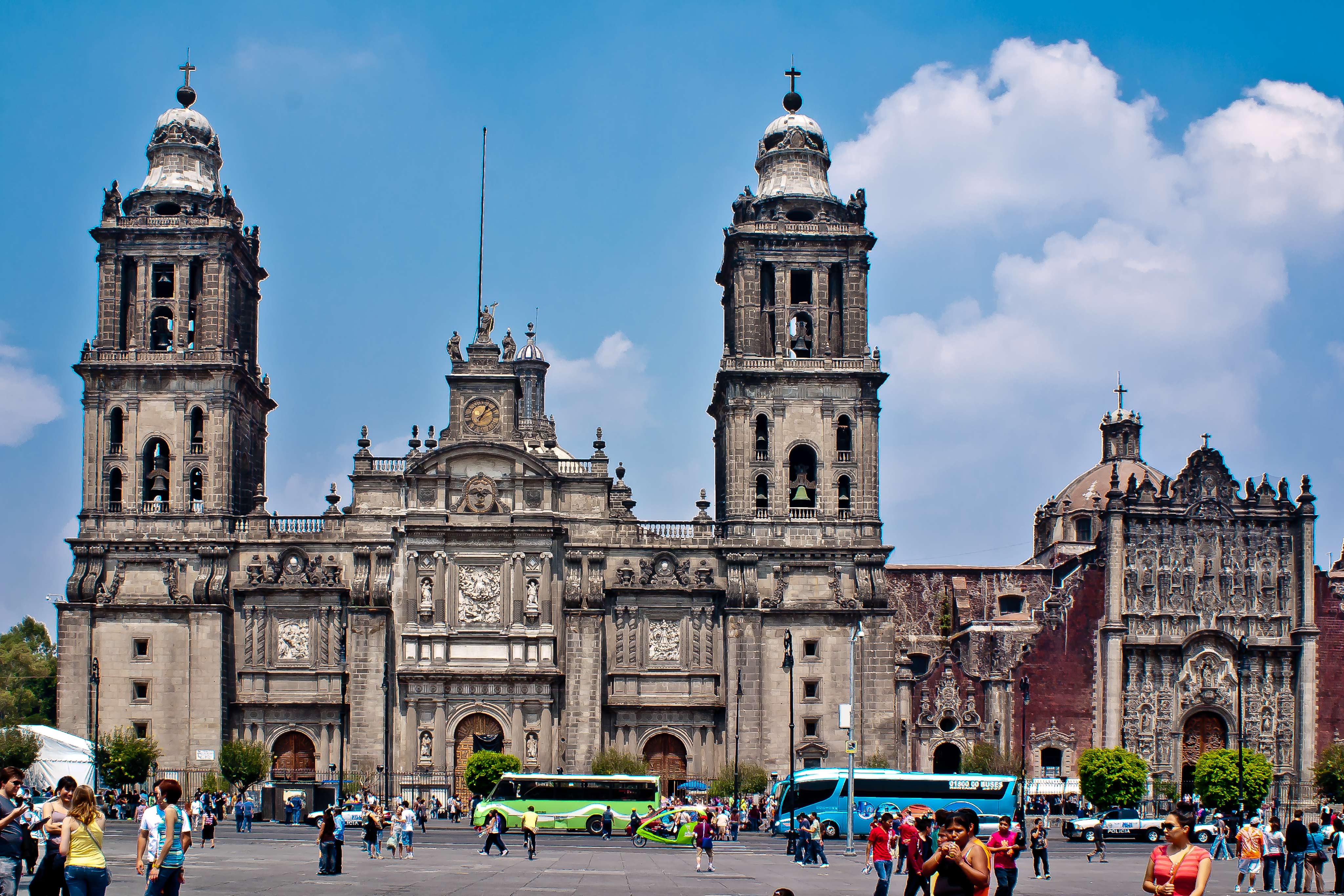|
Juan Diego
Juan Diego Cuauhtlatoatzin, also known as Juan Diego (; 1474–1548), was a Chichimec peasant and Marian visionary. He is said to have been granted apparitions of the Virgin Mary on four occasions in December 1531: three at the hill of Tepeyac and a fourth before don Juan de Zumárraga, then bishop of Mexico. The Basilica of Our Lady of Guadalupe, located at the foot of Tepeyac, houses the cloak ('' tilmahtli'') that is traditionally said to be Juan Diego's, and upon which the image of the Virgin is said to have been miraculously impressed as proof of the authenticity of the apparitions. Juan Diego's visions and the imparting of the miraculous image, as recounted in oral and written colonial sources such as the ''Huei tlamahuiçoltica '', are together known as the Guadalupe event ( es, el acontecimiento Guadalupano), and are the basis of the veneration of Our Lady of Guadalupe. This veneration is ubiquitous in Mexico, prevalent throughout the Spanish-speaking Americas, and inc ... [...More Info...] [...Related Items...] OR: [Wikipedia] [Google] [Baidu] |
Our Lady Of Guadalupe
Our Lady of Guadalupe ( es, Nuestra Señora de Guadalupe), also known as the Virgin of Guadalupe ( es, Virgen de Guadalupe), is a Catholic title of Mary, mother of Jesus associated with a series of five Marian apparitions, which are believed to have occurred in December 1531, and a venerated image on a cloak enshrined within the Basilica of Our Lady of Guadalupe in Mexico City. The basilica is the most-visited Catholic shrine in the world, and the world's third most-visited sacred site. Pope Leo XIII granted the image a decree of canonical coronation on 8 February 1887 and was pontifically crowned on 12 October 1895. Description of Marian apparitions According to ''Nican Mopohua'', a 17th-century account written in the native Nahuatl language, the Virgin Mary appeared four times to Juan Diego, an indigenous Mexican peasant Chichimec and once to his uncle, Juan Bernardino. The first apparition occurred on the morning of Saturday, 9 December 1531 (Julian calendar, which is De ... [...More Info...] [...Related Items...] OR: [Wikipedia] [Google] [Baidu] |
Miguel Cabrera (painter)
Miguel Mateo Maldonado y Cabrera (1695–1768) was a Mestizo painter born in Oaxaca but moved to Mexico City, the capital of Viceroyalty of New Spain. During his lifetime, he was recognized as the greatest painter in all of New Spain. He created religious and secular art for the Catholic Church and wealthy patrons. His casta paintings, depicting interracial marriage among Amerindians, Spaniards and Africans, are considered among the genre's finest. Cabrera's paintings range from tiny works on copper to enormous canvases and wall paintings. He also designed altarpieces and funerary monuments. Biography Cabrera was born in Antequera, today's Oaxaca, Oaxaca, and moved to Mexico City in 1719. He may have studied under the Rodríguez Juárez brothers or José de Ibarra. Cabrera was a favorite painter of Archbishop Manuel José Rubio y Salinas, whose portrait he twice painted, and of the Jesuits, which earned him many commissions. In 1 he created an important analytical stu ... [...More Info...] [...Related Items...] OR: [Wikipedia] [Google] [Baidu] |
Saint
In religious belief, a saint is a person who is recognized as having an exceptional degree of Q-D-Š, holiness, likeness, or closeness to God. However, the use of the term ''saint'' depends on the context and Christian denomination, denomination. In Catholic Church, Catholic, Eastern Orthodox Church, Eastern Orthodox, Anglican Communion, Anglican, Oriental Orthodox, and Lutheranism, Lutheran doctrine, all of their faithful deceased in Heaven are considered to be saints, but some are considered worthy of greater honor or emulation. Official ecclesiastical recognition, and consequently a public cult of veneration, is conferred on some denominational saints through the process of canonization in the Catholic Church or glorification in the Eastern Orthodox Church after their approval. While the English word ''saint'' originated in Christianity, History of religion, historians of religion tend to use the appellation "in a more general way to refer to the state of special holiness t ... [...More Info...] [...Related Items...] OR: [Wikipedia] [Google] [Baidu] |
Chichimeca
Chichimeca () is the name that the Nahua peoples of Mexico generically applied to nomadic and semi-nomadic peoples who were established in present-day Bajio region of Mexico. Chichimeca carried the meaning as the Roman term "barbarian" that described Germanic tribes. The name, with its pejorative sense, was adopted by the Spanish Empire. For the Spanish, in the words of scholar Charlotte M. Gradie, "the Chichimecas were a wild, nomadic people who lived north of the Valley of Mexico. They had no fixed dwelling places, lived by hunting, wore little clothes and fiercely resisted foreign intrusion into their territory, which happened to contain silver mines the Spanish wished to exploit." In spite of not having temples or idols, they practiced animal sacrifice, and they were feared for their expertise and brutality in war. The Spanish invasion resulted in a "drastic population decline of all the peoples known collectively as Chichimecas, and to the eventual disappearance as peoples ... [...More Info...] [...Related Items...] OR: [Wikipedia] [Google] [Baidu] |
Native Americans In The United States
Native Americans, also known as American Indians, First Americans, Indigenous Americans, and other terms, are the Indigenous peoples of the mainland United States ( Indigenous peoples of Hawaii, Alaska and territories of the United States are generally known by other terms). There are 574 federally recognized tribes living within the US, about half of which are associated with Indian reservations. As defined by the United States Census, "Native Americans" are Indigenous tribes that are originally from the contiguous United States, along with Alaska Natives. Indigenous peoples of the United States who are not listed as American Indian or Alaska Native include Native Hawaiians, Samoan Americans, and the Chamorro people. The US Census groups these peoples as " Native Hawaiian and other Pacific Islanders". European colonization of the Americas, which began in 1492, resulted in a precipitous decline in Native American population because of new diseases, wars, ethni ... [...More Info...] [...Related Items...] OR: [Wikipedia] [Google] [Baidu] |
Algonquian Peoples
The Algonquian are one of the most populous and widespread North American native language groups. Historically, the peoples were prominent along the Atlantic Coast and into the interior along the Saint Lawrence River and around the Great Lakes. This grouping consists of the peoples who speak Algonquian languages. Before Europeans came into contact, most Algonquian settlements lived by hunting and fishing, although quite a few supplemented their diet by cultivating corn, beans and squash (the " Three Sisters"). The Ojibwe cultivated wild rice. Colonial period At the time of the first European settlements in North America, Algonquian peoples occupied what is now New Brunswick, and much of what is now Canada east of the Rocky Mountains; what is now New England, New Jersey, southeastern New York, Delaware and down the Atlantic Coast through the Upper South; and around the Great Lakes in present-day Minnesota, Wisconsin, Michigan, Illinois, Indiana and Iowa. The homeland of the A ... [...More Info...] [...Related Items...] OR: [Wikipedia] [Google] [Baidu] |
Mohawk People
The Mohawk people ( moh, Kanienʼkehá꞉ka) are the most easterly section of the Haudenosaunee, or Iroquois Confederacy. They are an Iroquoian-speaking Indigenous people of North America, with communities in southeastern Canada and northern New York State, primarily around Lake Ontario and the St. Lawrence River. As one of the five original members of the Iroquois League, the Kanienʼkehá꞉ka are known as the Keepers of the Eastern Door – the traditional guardians of the Iroquois Confederation against invasions from the east. Historically, the Kanienʼkehá꞉ka people were originally based in the valley of the Mohawk River in present-day upstate New York, west of the Hudson River. Their territory ranged north to the St. Lawrence River, southern Quebec and eastern Ontario; south to greater New Jersey and into Pennsylvania; eastward to the Green Mountains of Vermont; and westward to the border with the Iroquoian Oneida Nation's traditional homeland territory. Kanienʼkehá ... [...More Info...] [...Related Items...] OR: [Wikipedia] [Google] [Baidu] |
Kateri Tekakwitha
Kateri Tekakwitha ( in Mohawk), given the name Tekakwitha, baptized as Catherine and informally known as Lily of the Mohawks (1656 – April 17, 1680), is a Catholic saint and virgin who was an Algonquin–Mohawk. Born in the Mohawk village of Ossernenon, on the south side of the Mohawk River in present-day New York State, she contracted smallpox in an epidemic; her family died and her face was scarred. She converted to Catholicism at age nineteen, when she was baptized and given the Christian name Kateri in honor of Catherine of Siena. Refusing to marry, she left her village and moved for the remaining five years of her life to the Jesuit mission village of Kahnawake, south of Montreal on the St. Lawrence River in New France, now Canada. Kateri Tekakwitha took a vow of perpetual virginity. Upon her death at the age of 24, witnesses said that her scars vanished minutes later, and her face appeared radiant and beautiful. Known for her virtue of chastity and mortification of the fl ... [...More Info...] [...Related Items...] OR: [Wikipedia] [Google] [Baidu] |
Martín De Porres
Martín de Porres Velázquez (9 December 1579 – 3 November 1639) was a Peruvian lay brother of the Dominican Order who was beatified in 1837 by Pope Gregory XVI and canonized in 1962 by Pope John XXIII. He is the patron saint of mixed-race people, barbers, innkeepers, public health workers, and all those seeking racial harmony. He was noted for his work on behalf of the poor, establishing an orphanage and a children's hospital. He maintained an austere lifestyle, which included fasting and abstaining from meat. Among the many miracles attributed to him were those of levitation, bilocation, miraculous knowledge, instantaneous cures, and an ability to communicate with animals. Life Martin was born in the city of Lima, Viceroyalty of Peru, on 9 December 1579. He was the illegitimate son of a Spanish nobleman, Don Juan de Porras y de la Peña, and Ana Velázquez, a freed slave of African and Native descent. He had a sister named Juana de Porres, born two years later in ... [...More Info...] [...Related Items...] OR: [Wikipedia] [Google] [Baidu] |
Rose Of Lima
Rose of Lima (born Isabel Flores de Oliva; 20 April 1586 24 August 1617) was a member of the Third Order of Saint Dominic in Lima, Peru, who became known for both her life of severe penance and her care of the poverty stricken of the city through her own private efforts. Rose of Lima was born to a noble family and is the patron saint of embroidery, gardening and cultivation of blooming flowers. A lay member of the Dominican Order, she was declared a saint by the Catholic Church, being the first person born in the Americas to be canonized as such. As a saint, Rose of Lima has been designated as a co-patroness of the Philippines along with Pudentiana; both saints were moved to second-class patronage in September 1942 by Pope Pius XII, but Rose remains the primary patroness of Peru and of the local people of Latin America. Her image is featured on the highest denomination banknote of Peru. Biography She was born as Isabel Flores de Oliva in the city of Lima, then in the Vicero ... [...More Info...] [...Related Items...] OR: [Wikipedia] [Google] [Baidu] |
Huei Tlamahuiçoltica
("''The Great Event''") is a tract in Nahuatl comprising 36 pages and was published in Mexico City, Mexico in 1649 by Luis Laso de la Vega, the vicar of the chapel of Our Lady of Guadalupe at Tepeyac outside the same city. In the preface Luis Laso de la Vega claimed authorship of the whole work, but this claim is the subject of an ongoing difference of scholarly opinion. The tract is written almost entirely in Nahuatl and includes the , which narrates the apparitions of Our Lady of Guadalupe at Tepeyac in 1531. It also includes the , which enumerates the miracles attributed by some; Luis Laso de la Vega does not mention either him or Antonio Valeriano as authors. The traditions recounted in the 1649 tract were first published in the Spanish book ("Image of the Virgin Mary, Mother of God of Guadalupe"), written by Miguel Sánchez in 1648 and being a theological dissertation linking the Guadalupan Image to . There is an equally contentious and much shorter manuscript in Nahuatl ... [...More Info...] [...Related Items...] OR: [Wikipedia] [Google] [Baidu] |
Roman Catholic Archdiocese Of Mexico
The Archdiocese of Mexico ( la, Archidioecesis Mexicanensis) is a Latin Church ecclesiastical territory or archdiocese of the Catholic Church that is situated in Mexico City, Mexico. It was erected as a diocese on 2 September 1530 and elevated to an archdiocese on 12 February 1546."Archdiocese of México" ''''. David M. Cheney. Retrieved February 29, 2016"Metropolitan Archdiocese of México" ''GCatholic.org''. Gabriel Chow. Retrieved February 29, 2016 The archdiocese is ... [...More Info...] [...Related Items...] OR: [Wikipedia] [Google] [Baidu] |












